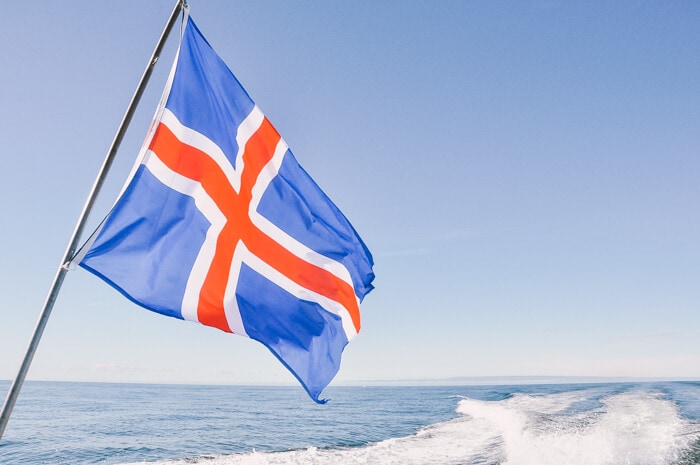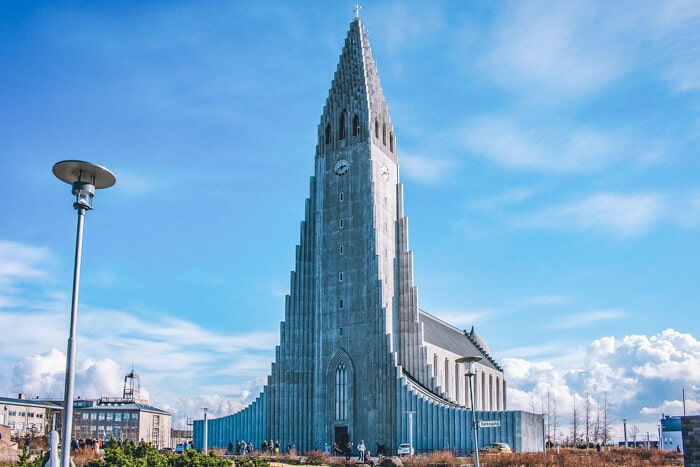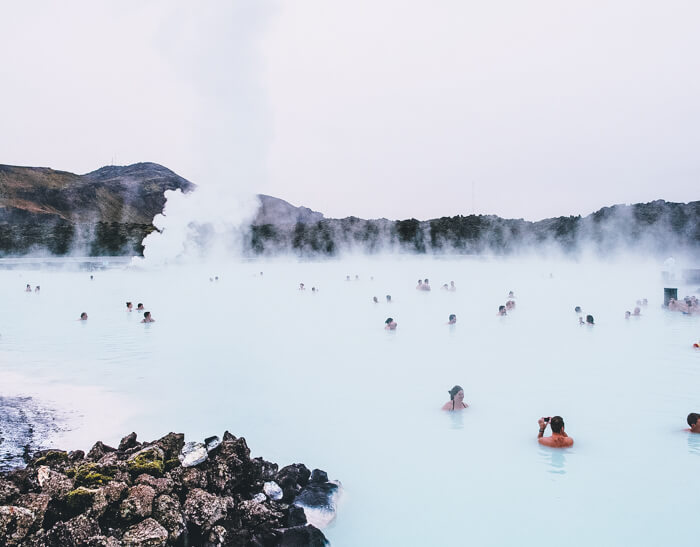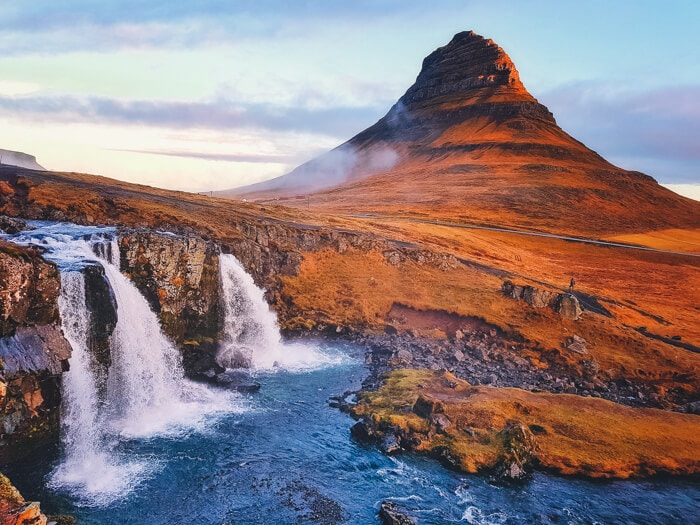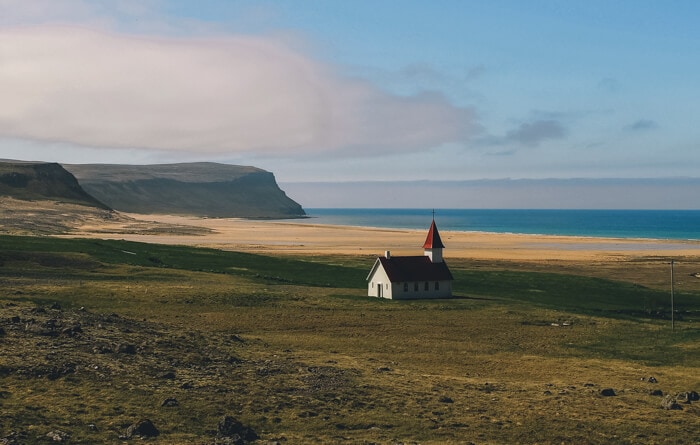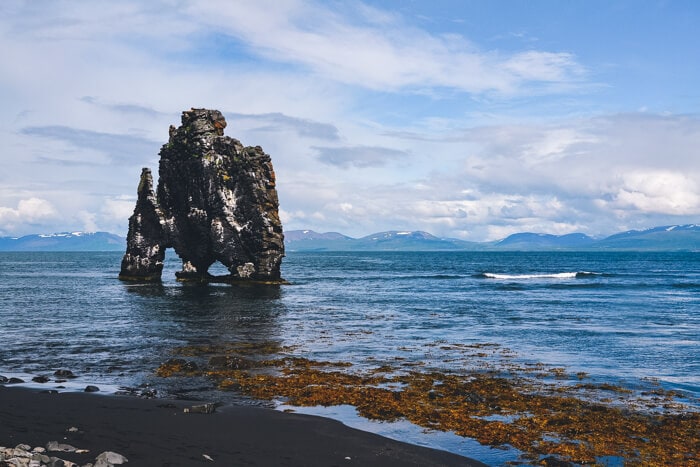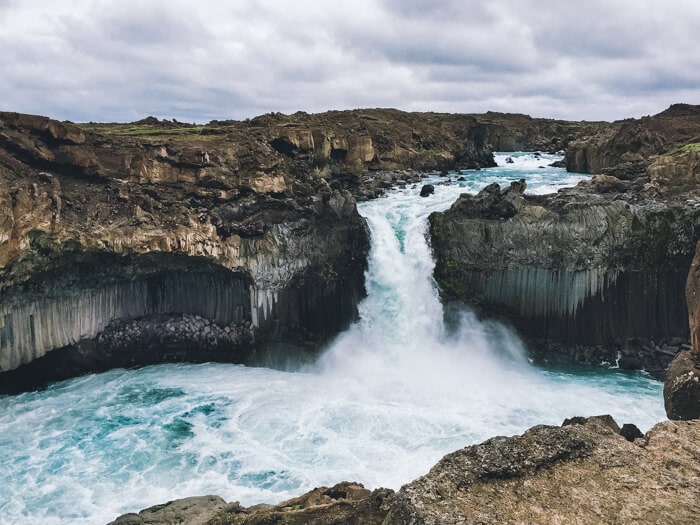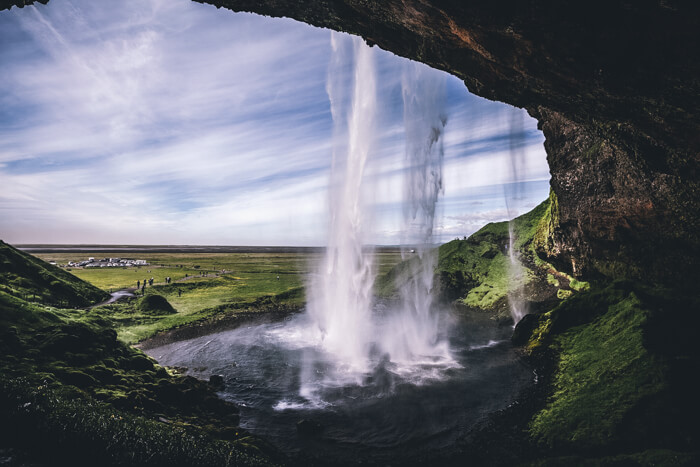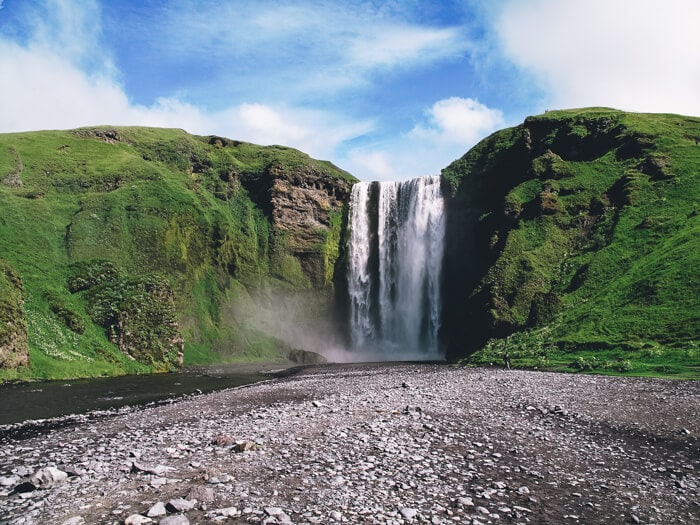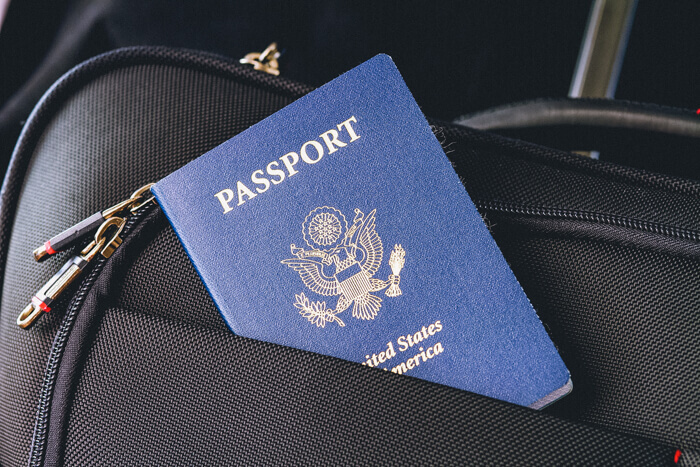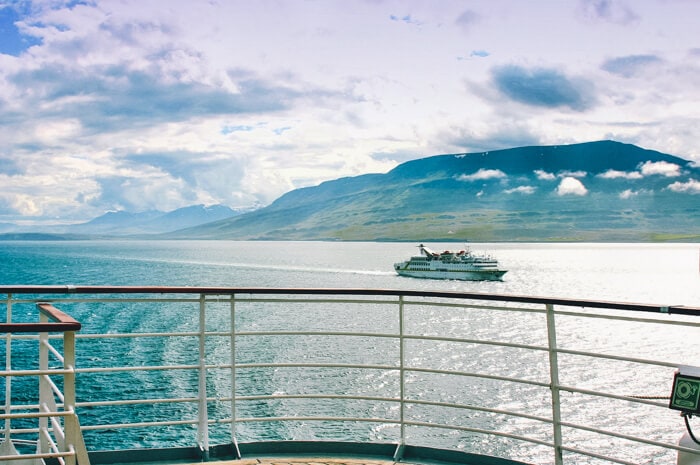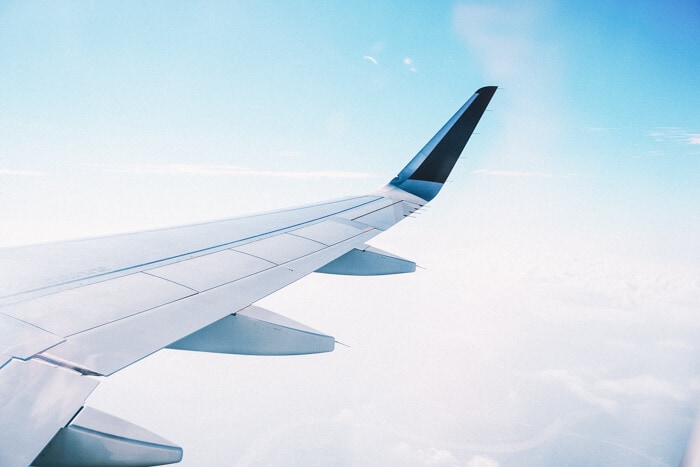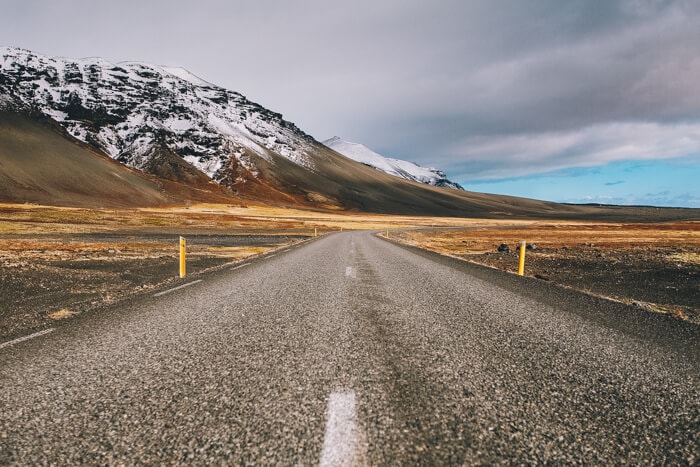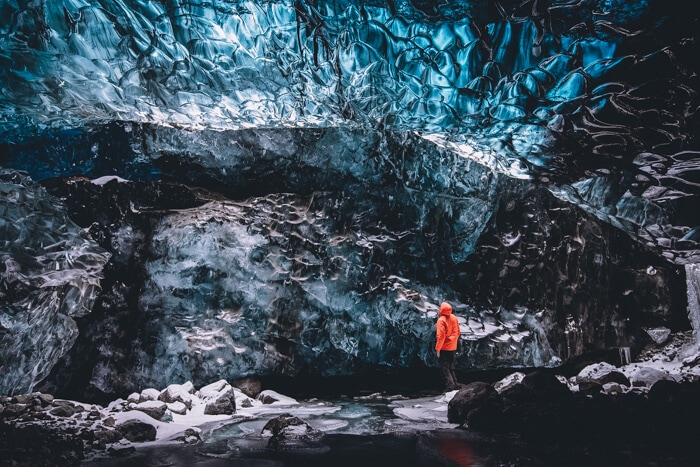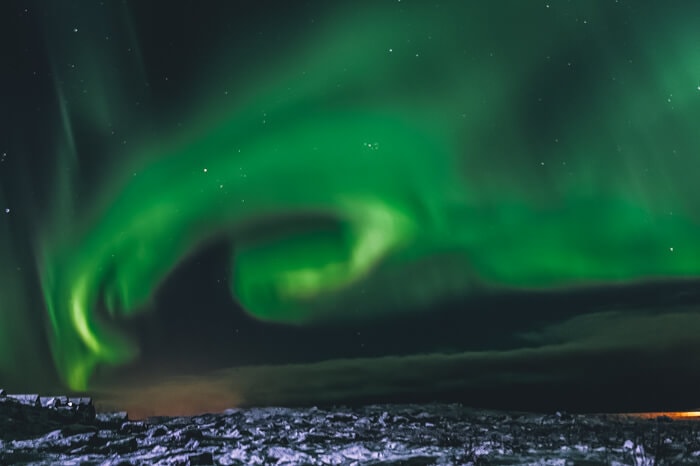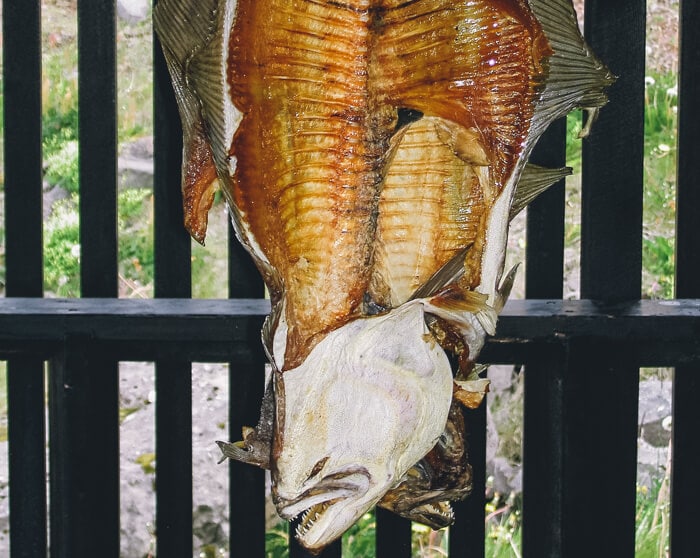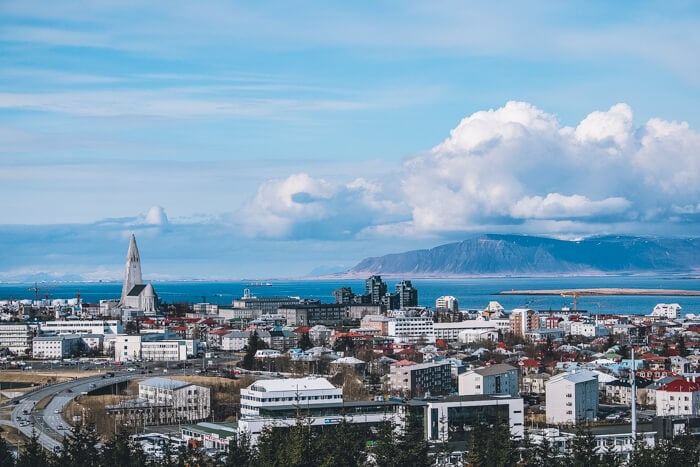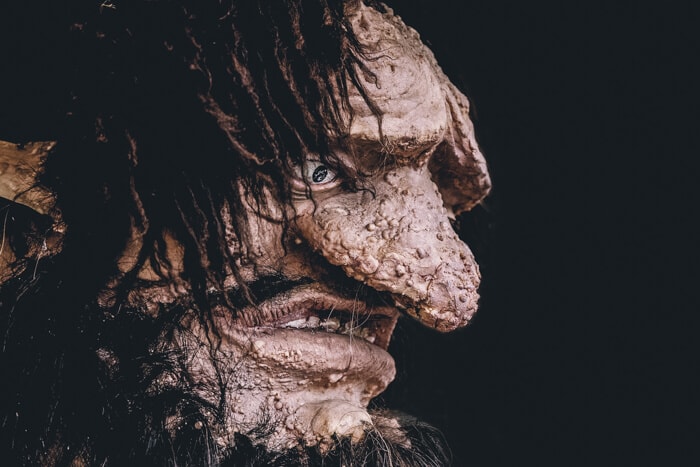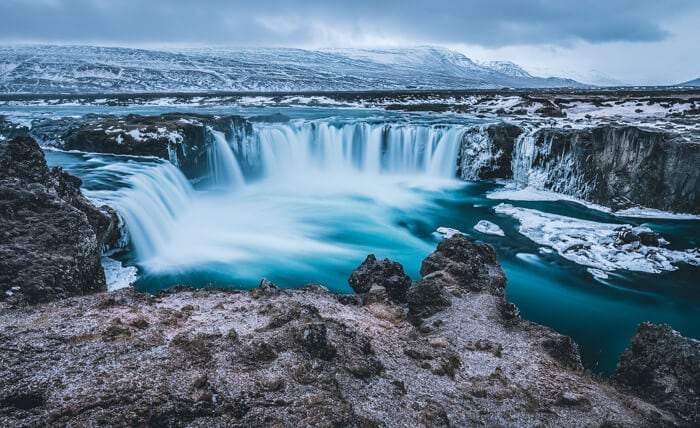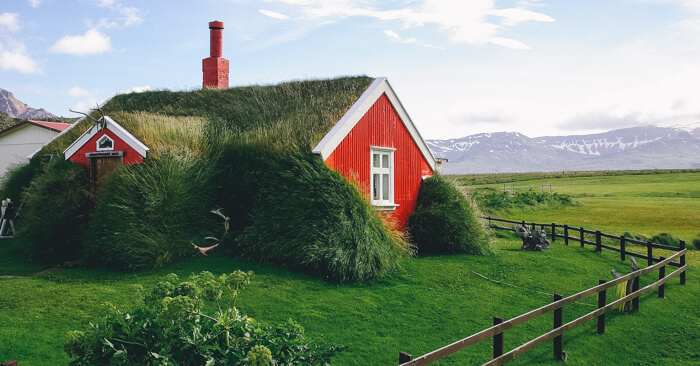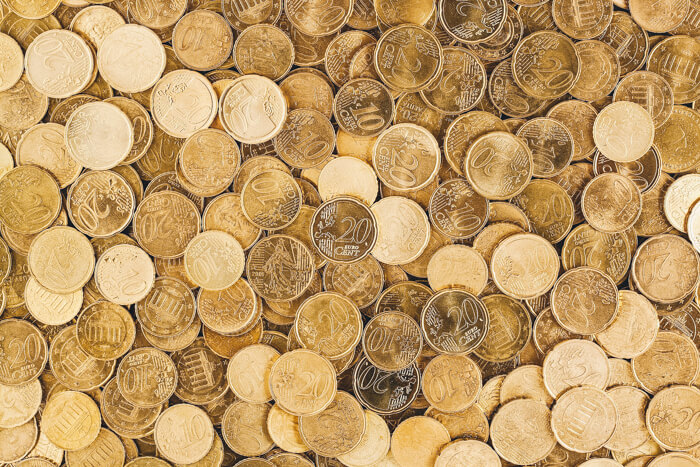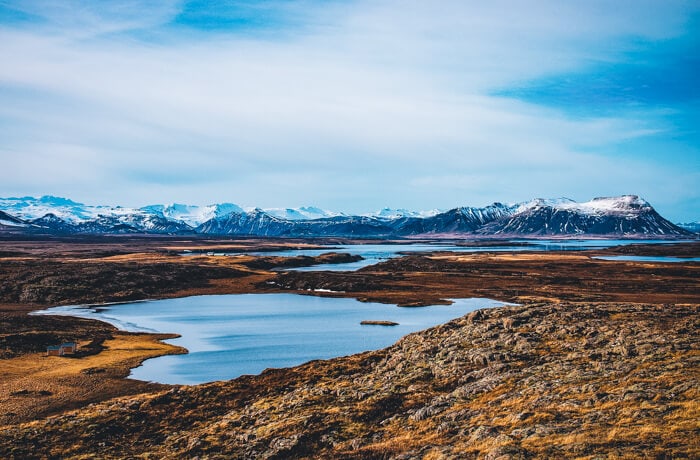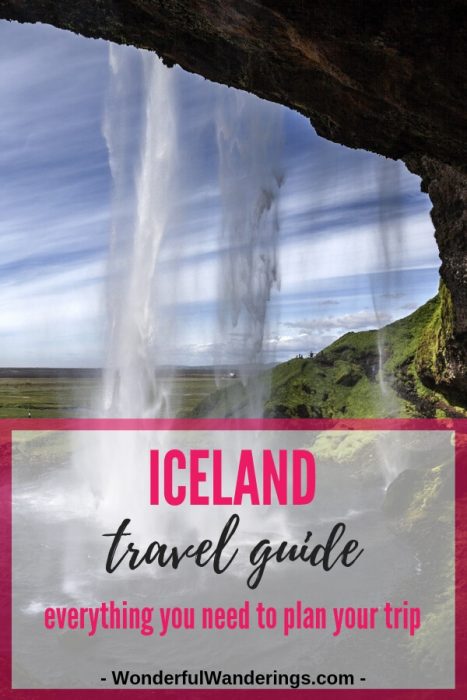Planning a trip to Iceland? Perfect! This Iceland Holidays Guide aims to help you plan your own trip to the “Land of Ice and Fire”, nicknamed like that because of its frosty winters and steaming volcanoes.
Iceland is an island nation that sits outside of the Arctic Circle, North of mainland Europe. It is the least densely populated country in Europe and has, for the most part, a tundra climate. Iceland is a member of the European Economic Area and NATO and is one of just a handful of countries that does not have an army.
Modern Iceland is one of the most progressive countries in the world and ranks first on the Global Peace Index. It has the lowest crime rate in the world and runs almost exclusively on renewable energy. On top of all that, Iceland boasts some of the most outstanding scenery in the world and has understandably become a major tourist destination in recent years.
Contents
- Iceland Holidays Guide: quick facts
- Iceland regions
- How to travel to Iceland
- How to travel around Iceland
- What to pack for Iceland
- The best time to visit Iceland
- What to eat in Iceland
- Famous events in Iceland
- Public holidays in Iceland
- Cultural customs to be aware of in Iceland
- Where to stay in Iceland
- Don’t forget travel insurance
- Basic phrases and their pronunciation
- Safety in Iceland
- The use of cash and cards in Iceland
- Calling abroad, WiFi and data use in Iceland
- Tipping in Iceland
- A brief history of Iceland
Iceland Holidays Guide: quick facts
Size: 103,001 km² or 39,770 sq mi
People living there: ~325,000
Capital: Reykjavik
Governmental structure: unitary parliamentary republic
National day: June 17
Time zone: UTC / GMT
Currency: Icelandic króna
Power voltage and socket type(s): 230V, plug types F and C. If these plug types don’t match your devices, make sure to bring a universal adapter.
Official religion(s)/Freedom of religion: Freedom of religion. 75% of Icelandic citizens are registered with the Christian National Church of Iceland, though less than half of them attend regularly. Christianity is followed by non-religious citizens, Muslims, Buddhists, and Hindus.
Official language(s) and general knowledge of English: Icelandic is the official language. English is widely spoken.
Drives on this side: right
International driver’s licence accepted? yes
Phone code: +354
Vaccinations needed? none other than those required for daily living in your own country
Can you drink the tap water? yes – Iceland is actually well known for having particularly delicious tap water!
Want to learn more fun facts about Iceland? Check out this post.
Iceland regions
While the capital of Iceland Reykjavik and the south coast are the most popular places to visit in Iceland, the other regions have a lot to offer as well and you can easily make multiple trips to Iceland without seeing the same thing twice.
1. Capital region
The capital region of Iceland is situated in the southwest of the country and comprises the national capital Reykjavik. This is normally the first place people visit when they travel to Iceland. One landmark you shouldn’t miss is the unique Hallgrímskirkja, an unusual looking church that took 41 years to build and houses a 15-meter tall organ. Reykjavik is the best place in the country to get clued up about Iceland’s fascinating cultural heritage. The National Museum of Iceland and the beautiful Concert Hall will give you a good feel for Iceland’s past and present respectively.
2. Southern Peninsula
The stand out attraction in the Southern Peninsula is the famous Blue Lagoon. Here, you soak in geothermal water, rich with minerals that will leave your skin feeling baby soft. If that’s not enough geothermal action, more can be found over at Gunnuhver where geysers shoot into the air and hot springs and mud pools bubble in the ground.
Iceland can get really, really cold so if the weather is a little too frightful for outdoor exploration, head to the Museum of Rock ‘n’ Roll. You might not know much about Iceland’s music scene but you will after an hour or two in this museum. Or, you could go to Viking World and learn about Iceland’s history.
3. Western Region
If you are a nature lover and enjoy spending time outside, you’re going to love the Western Region. Your first stop should be Grábrók, a 170 m volcanic crater that you can hike to the top of. Next, venture into the Víðgelmir cave and admire the intricate rock and ice formations.
If you like waterfalls – and let’s be honest, who doesn’t? – there are plenty in the Western Region. Hraunfossar is often considered the most beautiful waterfall in the country, but it has some stiff competition from Barnafoss, which is just two minutes away. After your adventures, check out the Steðji brewery in Borgarfjörður and try some of the most unusual beers you will ever encounter.
4. Westfjords
Westfjords is a beautiful, remote part of the country, which boasts steep, jagged mountains, secret hot springs, and some of Mother Nature’s finest creations. Few people make it out to this part of the country so if you do, you might just have the place to yourself. Start your exploration by hiking up Bolafjall Mountain and enjoying the views from the summit.
Your next stop should be Valagilis, a craggy ravine with a waterfall cascading into it. If you need something to spice up your Instagram, a stop at the Dynjandi waterfall is a must. It is supposedly the most picturesque waterfall in the entire country. Round up your trip here with a visit to the deeply unnerving Sea Monster Museum.
The Westfjords are also a great place to see puffins in Iceland. You can see them elsewhere too but they’re not hunted here and there are large colonies living around the Westfjords when it’s puffin season.
5. Northwestern Region
To give you an idea of what the Northwestern Region is like, the largest town in the region is Sauðárkrókur, which has a population of just 3,000. Nature reigns supreme here and nowhere is this more obvious than at the Kolugljúfur ravine and the accompanying Kolufossar waterfall. If you are a wildlife enthusiast then go to the seal sanctuary in Hvammstangi.
The Grettislaug geothermal pool is another highlight of the Northwestern Region. The temperature stays at around 39 degrees Celsius all year round and the pool is named after a warrior from the 11th century.
6. Northeastern Region
The Northeastern Region of Iceland is home to the largest and most powerful waterfall in Europe: Dettifoss. There are no boardwalks or viewing platforms here, just nature. While the falls can be seen from miles away, most people hike over the lava blocks to get a closer look at this natural phenomenon.
The Jökulsárgljúfur National Park is another attraction of this region, home to the longest river canyon in the country. The raw wilderness that comprises the landscape here is truly awe-inspiring. Finally, be sure to make time to see the horseshoe-shaped Goðafoss waterfall.
7. Eastern Region
On the other side of the country to Reykjavik is Iceland’s Eastern Region. This part of the country doesn’t see many visitors due to it being so far from the capital. However, it is home to a number of natural treasures. Are you pining for the fjords? Well, the East Fjords are among the nation’s finest and will blow you away with their natural splendor.
While the waterfalls in the Eastern Region don’t quite compare with the mighty Dettifoss, what they can boast is utter tranquility. Take the time to visit Hengifoss and you are almost guaranteed to be the only person there.
8. Southern Region
Finally, we come to the Southern Region, the largest region in Iceland and home to the famous Golden Circle ring route. This route runs past some of Iceland’s most popular attractions, including the Gullfoss waterfall, the Mýrdalsjökull glacier, and the volcanic, black sand beach of Vik.
If you want yet more waterfalls, Seljalandsfoss is one of Iceland’s most exciting waterfalls because you can walk behind the cascade and admire it from this unique vantage point. Kerið is another must-see and consists of a vivid turquoise lake at the bottom of an earthy red crater.
We combined the above in a one-week road trip in Iceland.
How to travel to Iceland
Entry requirements
Iceland is a party to the Schengen Agreement, which allows free movement in and out of the country for EU citizens and a visa-free stay for US citizens for up to 90 days.
Transportation
By ferry
You can travel by ferry from Hirtshals, Denmark, and from Torshavn in the Faroe Islands to Seydisfjordur in Iceland with the Faroese ferry company Smyril Line. The boat sails once a week between April and October and occasionally throughout the rest of the year. The journey takes between two and three days. This is not a convenient way to travel and should be a Plan B if you cannot fly.
By plane
Flying is the most popular way to get to Iceland. There are dozens of airlines that offer direct flights from all over Europe and North America to Keflavik International Airport, Iceland’s main hub for international travel. The airport is situated roughly 50km outside of Reykjavik.
How to travel around Iceland
Getting around Iceland independently
There is no rail network in Iceland, so it is not possible to take trains around the country. However, the country is well serviced by buses and there are hop on, hop off buses you can use for getting around Iceland.
Most people who tour through Iceland rent a vehicle and do a self-drive trip. This gives you complete freedom to stop as much as you like and to make any detours you think might be fun. Renting a vehicle in Iceland is not cheap and you are going to want a 4×4. But, if you’ve got the cash to splash, this option is well worth it as you’ll be able to see more in a shorter time span.
Click here for rental car options and prices.
What to pack for Iceland
Iceland is cold no matter when you visit. In the summer months, the country is warmed by the Gulf Stream, but you will still be able to find patches of snow in June if you go to the right (or wrong) places. Despite the chill, you are likely to spend most of your time outdoors whilst in Iceland. Sturdy boots, layered clothing, and a rainproof jacket should just about do it!
It can heat up a bit in summer and if you go hiking, you might just be able to do so in a t-shirt, but don’t hope for anything more than 16°C (60F).
 
What to pack for Iceland in summer
- an eye mask as it stays light at night
- layered clothing
- a warm yet packable jacket
- sneakers
- hiking boots
- sunglasses
- sunscreen
- comfortable hiking trousers
- a reusable water bottle
- a warm scarf
What to pack for Iceland in winter
I’ve spent one week road tripping in the south of the country in winter and have created this list of things to pack for Iceland in winter for you.
The best time to visit Iceland
If you’re wondering when to visit Iceland, the answer depends, as so often is the case, on what you want to get out of your trip. If you want somewhat nice weather, the best time to travel to Iceland is during the summer, from May to September. Due to Iceland’s location near the Arctic Circle, in summer you can enjoy the wonderful phenomenon that is the midnight sun. For between one to two months over the summer, the sun never sets. This gives you ample time to explore Iceland’s great outdoors – but you might need an eye mask to get to sleep at night.
If your goal is to see the Northern Lights then you may want to travel in February, March or October as these months offer the best chances of seeing them.
What to eat in Iceland
- Skyr – a thick yogurt similar to Greek yogurt but with a milder flavur
- Kjötsupa – warming soup made using the tougher bits of a lamb and vegetables
- Svid – literally a sheep’s head, not even chopped up or anything, just on a plate for you to eat
- Hardfiskur – Iceland’s version of jerky, made with dried fish
- Hakarl – fermented shark, a very acquired taste and people usually love it or hate it
- Slow roasted lamb – Icelandic lamb is among the best in the world as it is completely free-range and purebred. This dish is cooked on a low heat with lots of herbs
- Brennivín – also known as Black Death, it’s a strong alcohol made from fermented grain and potato, usually taken as a shot
- Icelandic hotdog – made from lamb and smothered with crispy onions, ketchup, and mustard
- Hrútspungar – ram’s testicles pressed and preserved in whey before being set in gelatin with garlic
- Black rye bread – this bread is buried underground and cooks with the heat of hot springs
Want more tips? Check out this post about typical Icelandic food.
Famous events in Iceland
- Feast of Þorri – gathering together with friends and families and feasting on traditional Icelandic dishes such as fermented shark, ram’s testicles and sheep’s head (January or February)
- Reykjavik Art Festival – celebration of visual arts, music, design and literature with a focus on innovation (May-June)
- Independence Day – parades and festivities in remembrance of the country’s declaration of independence (June 17th)
- Summer solstice – of particular importance in Iceland as on this day the sun never sets (June 21st)
- Folk Festival – held in North Iceland and involving concerts and lectures about Iceland’s cultural heritage (July)
- Þjóðhátíð í Eyjum – music festival in the Westman Islands (August)
- Innipúkinn – music festival featuring local and international artists in Reykjavik (August)
- Reykjavik Pride – gay pride festival celebrating the LGBTQ community in Iceland (August)
- Menningarnótt – also known as Culture Night, this is a celebration of art, music, and theatre across the capital (August)
- Reykjavik International Film Festival – 11 days of film screenings and interviews (September)
Public holidays in Iceland
- New Year’s Day
- Maundy Thursday (April 18)
- Good Friday
- Easter Monday
- First Day of Summer (April 25)
- Labour Day (May 1)
- Ascension Day
- Whit Sunday
- Whit Monday
- Independence Day (17 June)
- Commerce Day (August 5)
- Christmas Eve (afternoon only)
- Christmas Day
- Boxing Day
- New Year’s Eve (afternoon only)
Cultural customs to be aware of in Iceland
There are no cultural customs you need to be aware of in Iceland. Iceland is a very friendly, peaceful nation with a strongly progressive attitude. You are unlikely to offend anyone with pleasant, everyday manners.
Where to stay in Iceland
I always use Booking.com to book hotels for my travels. It has a bunch of filtering options so I can easily get a list of only the hotels that meet my criteria. If you want to book your Iceland accommodation, I highly recommend you check there.
When I want to stay in an apartment rather than a hotel, I use Airbnb.
Don’t forget travel insurance
No matter how well you plan and research a trip, there are always things that happen beyond your control. Something might get canceled, you can get ill or hurt while traveling or one of your electronics might break or get stolen. When misfortune strikes, travel insurance has got you covered. I’ve had ongoing travel insurance ever since I started traveling to make sure I’m covered for every trip I go on. Don’t have insurance yet? You can get a free quote here:
Basic phrases and their pronunciation
Please
Thank you
I don’t understand
Do you speak English?
How much does that cost?
Where is…?
Airport
How are you?
Goodbye
Vinsamlegast (vin-saam-leh-gast)
Takk fyrir (tak fi-rir)
Ég skil ekki (yeh skil eh-ki)
Talar þú ensku? (ta-lar thoo en-sku)
Hvað kostar það? (kvadh kos-tar thadh)
Hvar er…? (kvar er)
Flugvöllur (blu-kvojt-lur)
Hvernig hefur þú það? (kver-nik her-wer thoo thahd)
Bless (bless)
Safety in Iceland
Iceland was ranked the safest country in the world in the 2019 World Population Review rankings! This exceptionally low crime rate could be due to the very small population or because of the progressive nature of the country. Or both! Whatever the case, it’s excellent news for anyone planning on visiting the country.
Of course, mishaps can always happen so you still might want to take care when walking around late at night and especially when driving in Iceland in winter. But, for the most part, you can enjoy your holiday in peace.
The use of cash and cards in Iceland
Virtually every hotel, restaurant, business, and café in Iceland accepts cards. You can even pay for taxis and food from kiosks with credit and debit cards. Nevertheless, it is always a good idea to carry a small amount of cash on you just in case their card machine is broken or you stumble across one of the few places in the country that doesn’t take card.
Calling abroad, WiFi and data use in Iceland
Those with a SIM card from an EU country don’t have to pay roaming charges when calling, texting, or using data in Iceland – at least I don’t with my Belgian Mobile Vikings SIM. The same goes for some global phone plans.
If you don’t have a EU SIM but still want to have unlimited WiFi, check out Solis Wifi.
Skyroam offers both day passes and monthly subscriptions providing you with 4G throughout your trips. I’ve been using their daily passes not just when I travel outside the EU (no roaming charges for me in the EU) but also as a backup for when I think I’ll go over my phone’s data plan.
Check out Solis Wifi here.
Tipping in Iceland
As service charges are included in the bill in Iceland, tipping isn’t expected. You won’t be frowned upon for tipping for excellent services but you should never feel obliged to do so. You can read more about that here.
A brief history of Iceland
The first recorded settlement in Iceland was by the Vikings and their slaves back in the 9th century. From the late 800s onwards, more Vikings traveled to settle in Iceland from Norway and the British Isles. In the 11th century missionaries from Norway came to convert Icelanders to Christianity. Many Icelanders were vehemently opposed to this but eventually, Paganism was completely stamped out.
Norway continued to exert a powerful influence over Iceland and internal fighting between Icelandic clans led to a partial deterioration of the country. Eventually, the Icelandic Commonwealth collapsed and the people submitted to the reign of the Norwegian king.
During the 1500s and 1600s, Iceland felt the full force of religious reformation and came under fire by Denmark, By the mid-1600s the Icelanders were compelled to submit to the rule of the Danish king and the following era was one of economic hardship for the people of Iceland.
By the turn of the 20th century, Iceland was prosperous again. Reykjavik University was founded in 1911 and women were given the vote in 1915. From that point onwards, the country continued to progress at an exponential rate. In 1918, Iceland declared itself independent of Danish rule and in 1980 Vigdis Finnbogadottir was elected president of Iceland. She was the first elected woman ruler in the world.
And that’s it! I hope this guide gives you an idea of what to do in Iceland and will help you plan your own trip there.
PIN FOR LATER
This guide contains affiliate links. If you book or buy something through these links, I earn a small commission at no extra cost to you.
Find below our most important travel guides about Iceland.

